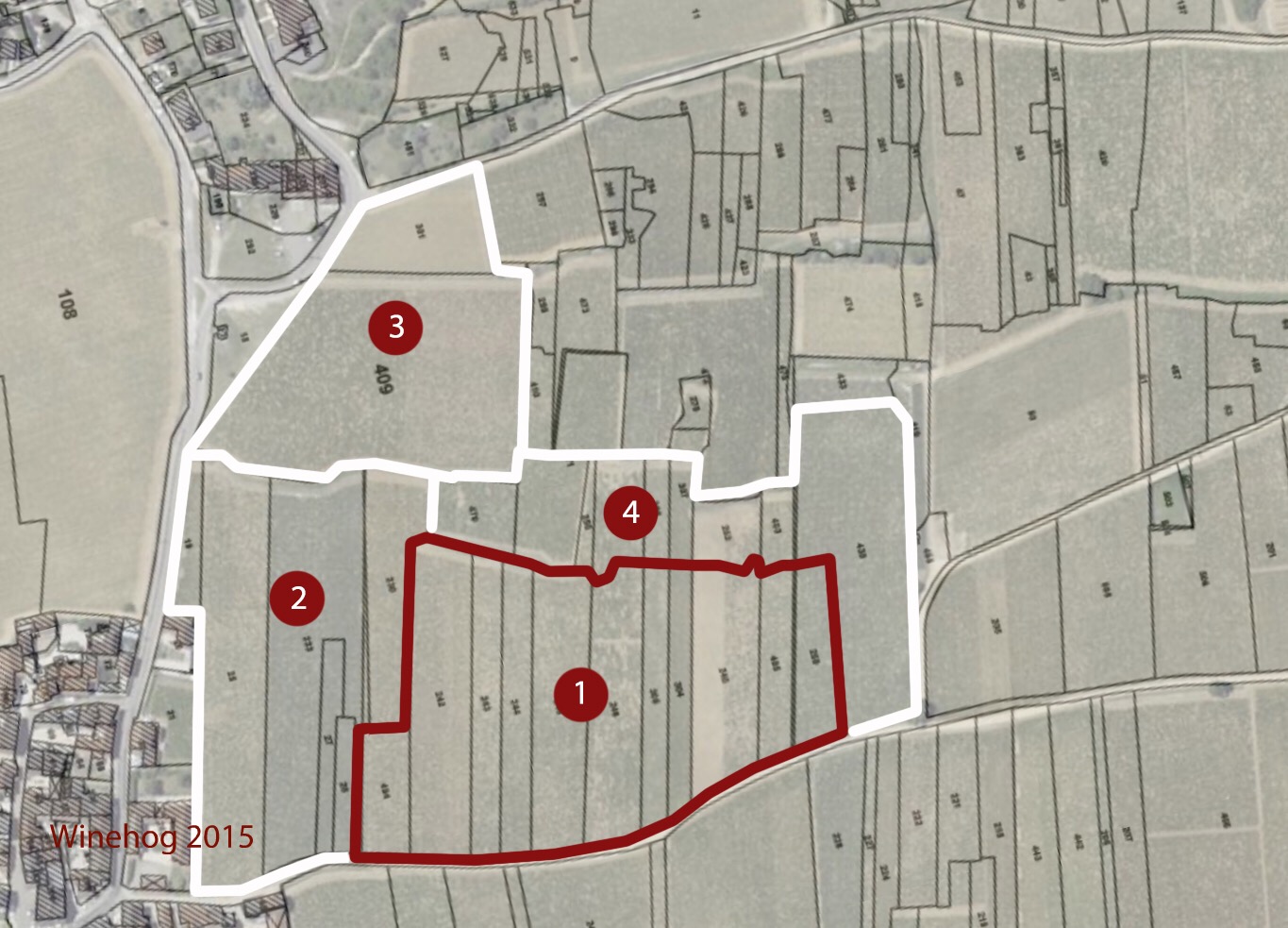Clos Saint-Denis is the somewhat unknown star of Morey-Saint-Denis … often overshadowed by its neighbour Clos de la Roche.
This is however a vineyard that should not be missed … with its more floral and lightfooted expression of Morey … the queen of the appellation … more refined and silky but perhaps lacking the weight and depth found in some of the other Morey grand crus.

Clos Saint-Denis seen from Domaine Ponsot
I do however like the more delicate style of Clos Saint-Denis … so lets go to Clos Saint-Denis and do some digging.
Clos Saint-Denis .. an expanded clos!
Clos Saint-Denis was originally a true Clos with stone walls …. this was never the case with Clos de la Roche. Clos Saint-Denis has however been expanded significantly just like Clos de la Roche … so what was once a 2.14201 ha Clos is now more than a 6 ha vineyard … just north and above Clos de la Roche.
There seems to be some confusion about the current total area of Clos Saint-Denis, in some material and the English Wikipedia on Clos Saint-Denis the area is 5.99 ha, on the BIVB website the area is quoted as 6.07 ha 7, Jasper Morris says 6.62 ha 6, Clive Coates also 6.62 ha 5.
So a lot to explore here …
The current area of Clos Saint-Denis
Clos Saint-Denis today consist of plots from 4 climats – Clos Saint-Denis, Calouére, Maison Brûlée and Les Chaffots – all located on the upper northern side of Morey-Saint-Denis – see map below..
The total area of the vineyard is according to my calculations – 6.62ha – as stated by Clive Coates and Jasper Morris.

Please note that the border between Les Chaffots 1 er cru and Clos Saint-Denis is not 100% accurate – see map below
Clos Saint-Denis – Complex borders and irregular plots
In many case the borders between the vineyards are ancient, and have remained unchanged for centuries.
But in other cases .. especially when vineyards have been expanded, the borders between the vineyards become rather complex, leaving the vignerons with irregular plots, and a part of a plot in one vineyard and the rest of the plot in another.
This is also the case with the border between the expanded Clos Saint-Denis, and the remaining part of Morey-Saint-Denis Les Chaffots.
The very detailed map below shows the current Clos Saint-Denis with all plots shown on the map. There are as mentioned plots from four climats included in the current Clos Saint-Denis.
Plots from the following climats are today included in Clos Saint-Denis:
- Clos Saint-Denis – 2.1420 ha
- Maison Brûlée – 1.8425 ha
- Calouére – 1.3165 ha
- Les Chaffots – 1.3190 ha
As it can be seen Clos Saint-Denis has absorbed the climats Calouére and Maison Brûlée, while it has taken a considerable chunk of Morey Saint Denis Les Chaffots.
The original Clos Saint-Denis – the core
The original Clos Saint-Denis was only 2.1420 ha and only included the climat Clos Saint-Denis.
Lavalle1 mention Clos Saint-Denis as Deuxieme Cuvée with a total area of 2.1420 ha in 1855. The 1861 classification2 confirms the area, but here it’s classified as 1re Cuvée. So a bit of dissagrement here between Lavalle and the Comité d’Ágriculture … with Lavalle only rating this in the third level of the Morey vineyards – and after the other Grand Crus. And Calouére was only rated Troisieme Cuvée by Lavalle.
Rodier 2comfirmed the area in his book .. so Clos Saint-Denis was not expanded when he made the book in 1920. Rodier rated Clos Saint-Denis as Premiére Cuvée – thus following the Comité d’Ágriculture..
The map below shows the original Clos Saint-Denis.
The expansion of Clos Saint-Denis
Clos Saint-Denis was presumably expanded in 1936 in connection with the classification of the vineyards – the AOC for Morey-Saint-Denis and Clos Saint-Denis was finalized on December 8th 1936.
I have however not been able to find documentation for this expansion as the INOA decree from 1936 seems to be impossible to find.
You need to login to read the rest of this article. If you are not a subscriber, use the subscribe function and sign-up.



 - A true vin d’émotion – a Burgundy of passion
- A true vin d’émotion – a Burgundy of passion - A truly hedonistic wine – lively and enjoyable
- A truly hedonistic wine – lively and enjoyable - A vivacious wine for pure indulgance
- A vivacious wine for pure indulgance - A potential vin d´émotion - frais et léger
- A potential vin d´émotion - frais et léger